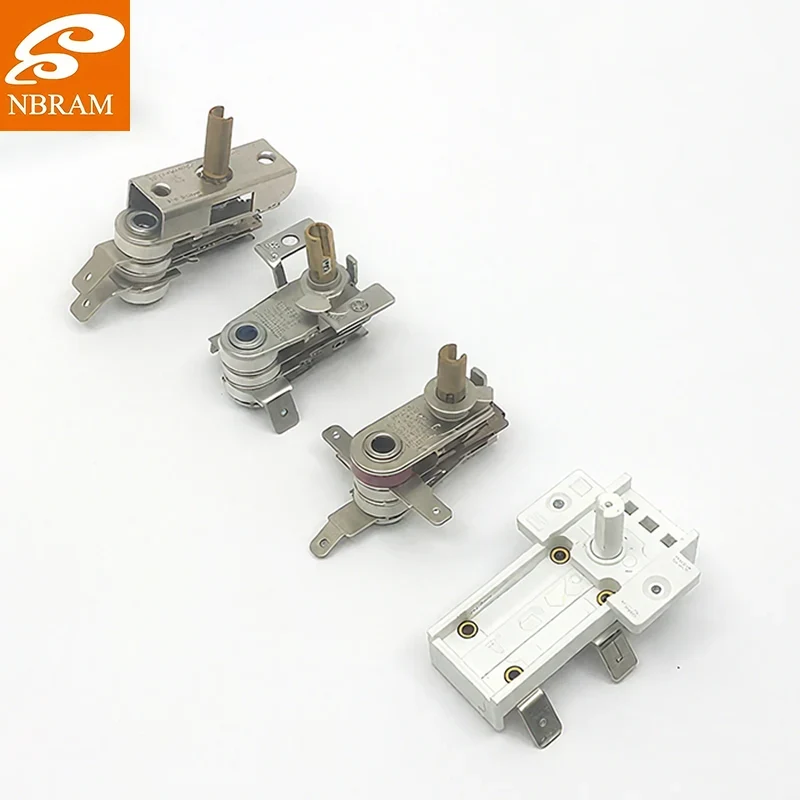You know, after installing thousands of thermostats over the years, I can tell you that most adjustable thermostat is like cheap watches - they look good but can't keep proper time. NBRAM's product is different. We've engineered these units to maintain temperature accuracy within ±0.5°C even in the most demanding industrial environments. The solid brass sensor and military-grade components ensure reliability that'll outlast your equipment. Whether you're controlling industrial ovens, HVAC systems, or process equipment, our thermostats deliver precision that makes other brands look amateurish. Trust me, I've seen what happens when inferior thermostats fail - it's not pretty.
I'll never forget the time a client called me in a panic because their expensive industrial mixer had shut down due to a faulty thermostat - turns out the cheap import they'd used had a calibration that drifted almost 10°C in six months. That's when I knew we had to create an adjustable thermostat that actually stays adjusted. Our design uses a precision-ground cam mechanism that maintains its setting even after thousands of cycles. The temperature range isn't just numbers on a dial; we've tested each unit across its entire operating spectrum to ensure consistent performance. What really makes me proud is knowing that our thermostats are controlling critical processes in hospitals, laboratories, and manufacturing facilities where reliability isn't just important - it's essential.
Let's talk specifics about what makes our adjustable thermostat the reliable choice for professionals who can't afford temperature control failures. The temperature range isn't some theoretical maximum - we offer models from -30°C to 300°C, but here's the important part: each range is optimized for that specific application. For freezer applications, we use special lubricants that won't stiffen at low temperatures. For high-temperature models, the contacts are made of special alloys that resist welding. The differential adjustment is another feature that sets us apart - you can fine-tune it from 1°C to 5°C depending on your process needs. The electrical ratings are conservative too - our 16A models are actually tested at 20A continuous to ensure a safety margin that'll keep your equipment protected.
Let me share a story that perfectly illustrates why our adjustable thermostat stands out. We had a chocolate factory client whose production was constantly interrupted because their existing thermostats couldn't maintain the precise 31.5°C required for perfect tempering. After switching to our units, not only did their rejection rate drop by 85%, but their energy consumption decreased too. The secret? Our dual-sensor technology and the way we've designed the calibration mechanism. I've personally tested these in environments ranging from -40°C freezer rooms to 200°C industrial dryers, and they perform flawlessly. The snap-action switch design prevents temperature creep, while the hermetically sealed sensor compartment eliminates false readings from ambient conditions.
Walking through our thermostat production line is like watching a master watchmaker at work - every movement precise, every component inspected with an eagle eye. Our senior technician, Mr. Chen, has been with us for 28 years and still personally checks every calibration rig. He's got this sixth sense for spotting even the slightest deviation in sensor response.
The heart of our adjustable thermostat is the sensing element. We source bimetallic strips from a specialty German manufacturer that supplies the aerospace industry. These aren't your off-the-shelf components; each strip is individually tested and matched to specific temperature ranges. The calibration process is where the real magic happens. We use computer-controlled calibration ovens that ramp temperatures with 0.1°C precision, taking readings at 50 different points across the range. This isn't just about hitting the marked temperatures; it's about ensuring linear response throughout the entire scale.
I remember one particularly challenging project for a pharmaceutical company that needed thermostats for stability chambers. The requirement was ±0.3°C accuracy over a 15-25°C range with 95% humidity. Our standard units were good, but not quite there. So we developed a special version with gold-plated contacts and a modified snap-action mechanism that reduced hysteresis to almost nothing. The client was amazed when we delivered units that actually outperformed their specifications.
The assembly process is mostly manual because robots simply can't match the tactile feedback our technicians get when setting the calibration screws. Each adjuster has a specific torque setting - too loose and it'll drift, too tight and you risk damaging the mechanism. Our lead assembler, Xiao Wang, can tell just by feel when the tension is perfect.
Quality control is brutal but necessary. Every single thermostat undergoes 24-hour burn-in testing at both temperature extremes. We then test at five different set points, verifying not just that it trips at the right temperature, but that it does so consistently. The differential (the difference between cut-in and cut-out temperatures) is checked to ensure it meets the specified range - typically 1-3°C depending on the model.
The housing construction is another area where we don't compromise. The die-cast aluminum cases are powder-coated with a finish that withstands chemicals, moisture, and temperature cycling. The terminal blocks are solid brass with silver-plated contacts that won't corrode or develop high resistance over time.
One thing that sets us apart is our willingness to customize. Recently, a marine equipment manufacturer needed thermostats that could handle salt spray exposure. We developed a special conformal coating that protects the internal components while maintaining thermal transfer characteristics. Another client in the plastics industry needed faster response times, so we redesigned the sensor mounting to improve thermal conductivity.
The documentation that comes with each thermostat is comprehensive - full calibration certificates, installation guidelines, and even maintenance recommendations. We've learned that proper installation is just as important as quality manufacturing, so we include detailed instructions that even novice electricians can follow.
Production capacity is substantial but we maintain strict batch controls. Most orders ship within 10 working days, with rush orders possible for standard models. The beauty of our design is that while we use precision components, the assembly process is efficient enough to keep costs reasonable without sacrificing quality.
